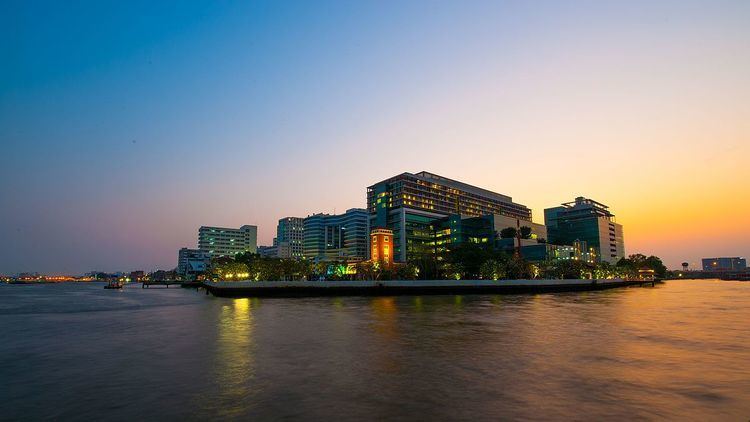Emergency department Yes Phone +66 2 419 7000 | Hospital type Teaching Beds 2,300 Founder Chulalongkorn | |
 | ||
Care system National Health Insurance System Address 2 Thanon Arun Amarin, Khwaeng Siriraj, Khet Bangkok Noi, Krung Thep Maha Nakhon 10700, Thailand Hours Open today · Open 24 hoursThursdayOpen 24 hoursFridayOpen 24 hoursSaturdayOpen 24 hoursSundayOpen 24 hoursMondayOpen 24 hoursTuesdayOpen 24 hoursWednesdayOpen 24 hoursSuggest an edit Founded 26 April 1888, Bangkok, Thailand Affiliated university Faculty of Medicine Siriraj Hospital, Mahidol University Similar Bangkok Noi District, Ramathibodi Hospital, Siriraj Medical Museum, King Chulalongkorn Memorial, Grand Palace | ||
Siriraj Hospital (Thai: โรงพยาบาลศิริราช; rtgs: Rong Phayaban Sirirat) is the oldest and largest hospital in Thailand, located in Bangkok on the west bank of the Chao Phraya River, opposite Thammasat University's Tha Phrachan campus. It is the primary teaching hospital of the Faculty of Medicine Siriraj Hospital, Mahidol University.
Contents
Description
With a capacity of more than 2,000 beds and more than one million outpatient visits per year, Siriraj is one of the largest and busiest medical centers in Southeast Asia. The medical school accepts about 250 medical students and more than 100 for postgraduate residency training each year. Siriraj is the largest public hospital in Thailand. Thanks to its excellent reputation, its tertiary care unit is the referral center for all hospitals in Thailand.
History
The hospital was founded by King Chulalongkorn in 1888, two years after a worldwide cholera outbreak. It is named after the king's 18-month-old son, Prince Siriraj Kakuttaphan, who had died from dysentery a year before the opening of the hospital. The medical school was established two years later in 1890.
Prince Dipangkorn Rasmijoti the grandson of King Bhumibol and the son of Thai crown prince, Prince Maha Vajiralongkorn, was also born here.
Siriraj was the residence of the King of Thailand, Bhumibol Adulyadej, from September 2009 to August 2013. He entered the hospital for treatment of a respiratory condition. In October 2014 King Bhumibol had gall bladder surgery at Siriraj. He died there on 13 October 2016.
Museum
The hospital houses the Siriraj Medical Museum, which is open to the public. The museum contains six separate permanent exhibits and includes a temporary exhibit. The permanent exhibits include sections on anatomy, pathology, congenital disorders, toxicology, techniques of Thai traditional medicine, and forensic pathology. In 2008, the temporary exhibit featured the role of Siriraj Hospital during the 2004 tsunami that devastated the Andaman coastline of Thailand and other countries. The latest museum is Siriraj Bimuksthan Museum which is opened in early 2013. The museum is housed in the renovated vintage architecture of the old Bangkok Noi train station, next to Siriraj's newly opened private subsidiary Siriraj Piyamaharajkarun Hospital. The museum exhibits history of medicine in Thailand from traditional medicine to modern and includes history of the Bangkok-noi area where the museum and the hospital are sited.
